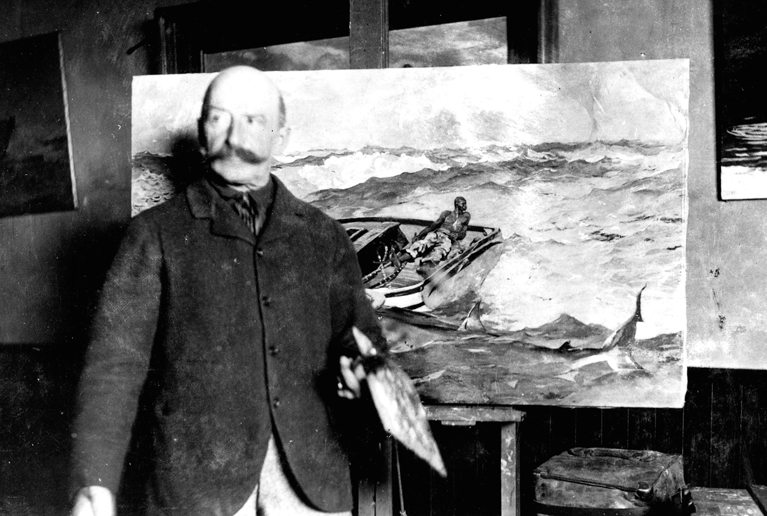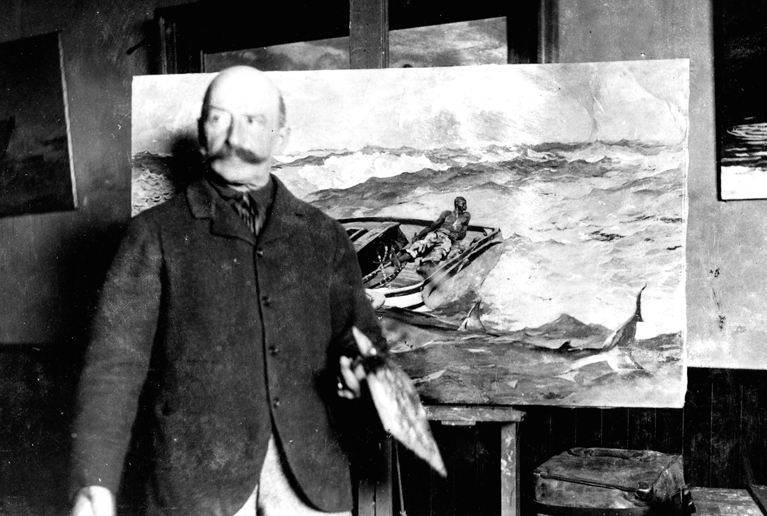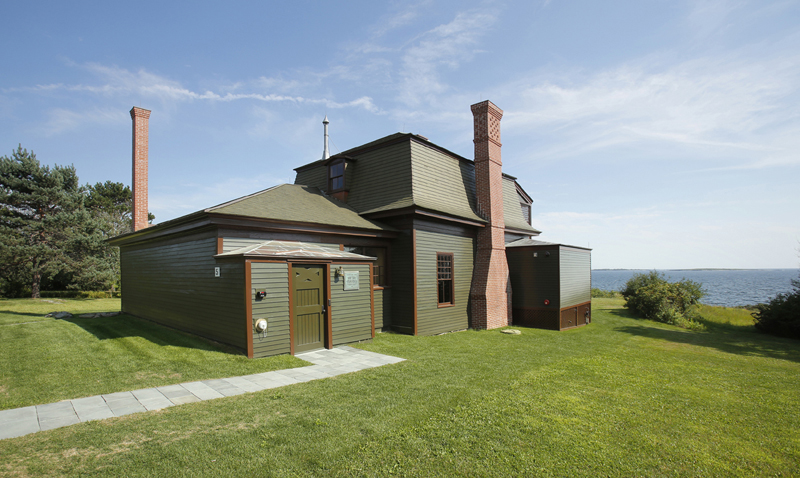SCARBOROUGH — Winslow Homer came to Maine and looked outward into the infinite. What he saw when he arrived at land’s end changed not only his personal perspective of the world and his mortal place in it, but the course of American art.
From a simple, austere painting studio at Prouts Neck, just south of Portland, the Boston-born painter cast his vision to the sea and established a reputation as the most important American painter of his generation and for generations to come.
The significance of the Prouts Neck studio and the art that Homer (1836-1910) made there during the final 27 years of his life will get a lot of attention this fall, in Maine and across the art world.
On Sept. 25, the Portland Museum of Art opens the wood-walled studio to the public for the first time since an extensive restoration project returned it to how it looked when Homer lived and created there. On Saturday, the museum unveils a major exhibition that focuses on the paintings he made there.
At Prouts Neck, Homer created powerful seascapes and contemplated the force and role of nature in a society grappling with technological change. The paintings he made there reached for something more than mere narrative descriptions that defined his earlier work, and suggested existential themes that resonated with and influenced his modernist descendants of the early 20th century.
“Homer is our most important American artist, or one of them. He is certainly our great painter of nature,” said retired Princeton University art professor and part-time Maine resident John Wilmerding. “To have the place where he made his art available to us is one of the most significant developments in American art in quite some time.
“It’s important, because it allows us to understand how the art was made and where it came from.”
Art world watches
The Prouts Neck studio project is the culmination of a six-year, $10.8 million fundraising campaign that paid for the studio’s purchase and preservation, an endowment, land acquisition, a major exhibition and scholarship, and related expenses.
Its restoration has reverberated nationally. The museum already has received extensive media coverage from The New York Times, Architectural Digest, Martha Stewart Living, Art + Auction, Preservation magazine, National Geographic Traveler and many others. “CBS Sunday Morning” filmed a segment that will air in the fall.
The museum bought the studio from Homer’s heirs in 2006 for $1.8 million. It stands a stone’s throw from the water’s edge, 12 miles from downtown Portland.
To the best knowledge of the architects and scholars who worked on the project, the small, simple building is almost exactly as it was when Homer lived there from 1883 until his death in 1910 at age 74.
With its bare walls still adorned with the artist’s handwritten notes, the studio resonates with the patina of Homer’s presence. Visitors will see where he set up his easel, his furniture, his smoking pipe, a water can, family photographs and other artifacts from his daily life.
Most notably, the studio offers visitors the same views of the sea and the rugged coast that Homer enjoyed when he made his iconic seascapes and other late-career paintings. Here, nestled in the wealthy summer enclave that Homer’s family helped establish, we see how he translated the environment into canvas, and can share his sensuous experience — the sights, sounds and smells of the ocean.
In advance of the studio’s opening, the PMA will premiere a new exhibition Saturday in its downtown galleries that puts that genius on display.
“Weatherbeaten: Winslow Homer in Maine” focuses exclusively on the paintings, watercolors and etchings that Homer made while in residence at the studio. It includes more than three dozen masterworks, including his 1893 oil painting “Fox Hunt,” which some art historians consider one of the most important paintings in the United States.
Send questions/comments to the editors.






Success. Please wait for the page to reload. If the page does not reload within 5 seconds, please refresh the page.
Enter your email and password to access comments.
Hi, to comment on stories you must . This profile is in addition to your subscription and website login.
Already have a commenting profile? .
Invalid username/password.
Please check your email to confirm and complete your registration.
Only subscribers are eligible to post comments. Please subscribe or login first for digital access. Here’s why.
Use the form below to reset your password. When you've submitted your account email, we will send an email with a reset code.